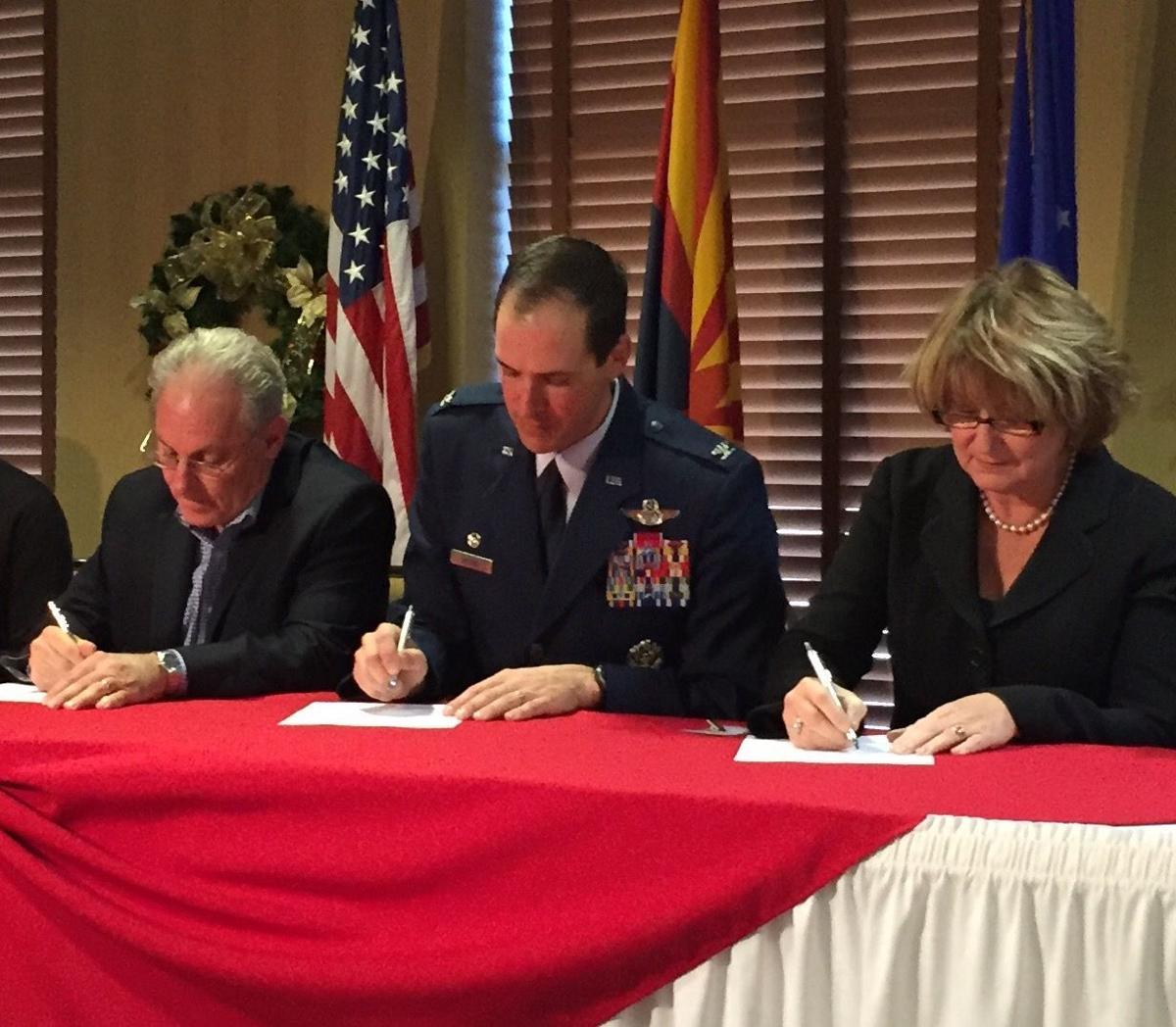Davis-Monthan Air Force Base has agreed to partner with local governments and agencies on projects meant to benefit both the base and the community, including new collaborations with the University of Arizona.
D-M and community leaders also have created a steering committee to guide future collaborations under the service-wide Air Force Community Partnership program.
At a ceremony formalizing several partnerships Monday, 355th Fighter Wing commander Col. James Meger said the agreements and others that may be considered in the future help him meet one of his main obligations, optimizing base resources.
“This is really important, because it’s the integration of the partnership of the community and the military installation,” Meger said following a signing ceremony.
“Every dollar that I’m given, I need to be incredibly effective (at spending), so this gets right to optimizing resources, and it’s not just a money integration, it’s intellectual capital.”
On Monday, Meger and local officials signed six memorandums of agreement covering four initiatives:
- A Community Partnership executive steering committee with members representing D-M, the city of Tucson, Pima County, the University of Arizona, the Southern Arizona Veterans Administration Health Center and Pima Community College.
- An educational partnership to set up on-base internship opportunities for UA and Pima College students.
- A project to launch language-development events where the 55th Electronic Combat Group — which includes linguists who translate for intelligence and surveillance purposes — can mentor foreign-language students with the UA.
- An emergency-response communication partnership to increase communication between the base and local emergency responders. As part of that effort, D-M will be joining the Pima County Wireless Integrated Network (PCWIN).
The agreements grew out of meetings that began early this year at D-M under the Air Force Community Partnership program, which was launched in 2013.
As of mid-2015, more than 1,000 initiatives at 50 Air Force installations have been identified to date, with more than 100 partnering agreements signed, according to the Air Force Community Partnership Team.
Earlier this year, D-M and community leaders came up with a list of about 40 possible community partnerships.
Some, such as installing a small-scale wastewater treatment plant on base, are on hold because of their cost and difficulty. Others, such as letting the public use base facilities like the golf course, might require essentially moving D-M’s fence line, creating security concerns.
UA President Ann Weaver Hart said she welcomed the partnership with the university, noting the school’s College of Architecture, Planning and Landscape Architecture is working on compatible land-use planning with D-M.
“With the languages and the internships, we have a lot of skills to bring to this discussion, but we also understand land-use planning and the role of the base in the future of our community,” she said.
For local governments and institutions, the partnerships are also about helping D-M thrive and showing community support, as the Pentagon is forced to cut budgets and consider a new round of base closings.
“It’s really about growing our relationships and protecting the base,” Pima County Supervisor Sharon Bronson said. “If D-M goes away, a good piece of our economy goes away.”
Tucson Mayor Jonathan Rothschild said that during a recent visit to Washington, Air Force Secretary Deborah Lee James told him community support is a major factor as leadership decides where to place or move military missions.
Lt. Col. Scott Findley, executive secretary of D-M’s Community Partnership program, said some of the initial agreements formalize efforts already underway.
For example, he said, D-M already has several student interns in its legal and medical groups and an intern is planned for D-M’s public-affairs office.
Other ongoing projects include one with the UA’s Valley Fever Center of Excellence and College of Agriculture to study the relationship between the respiratory disease and turf grass, focusing on the health of Air Force working dogs.





